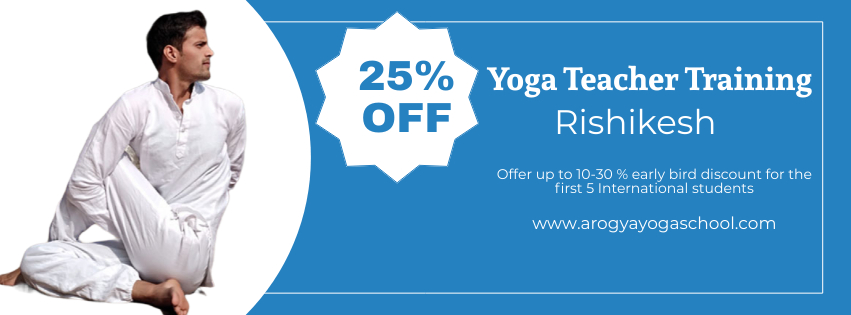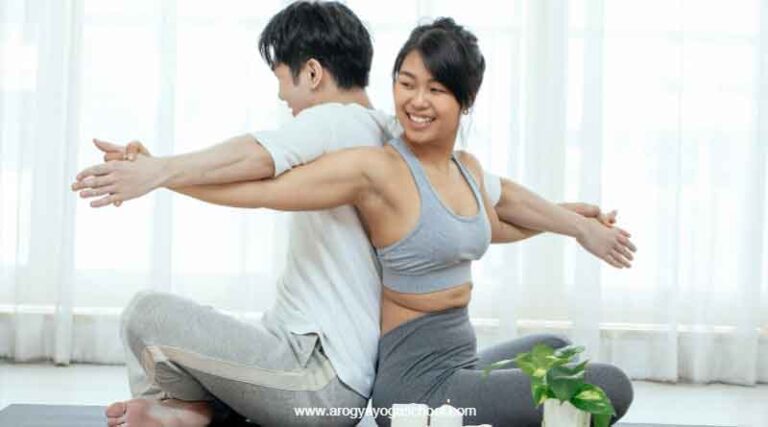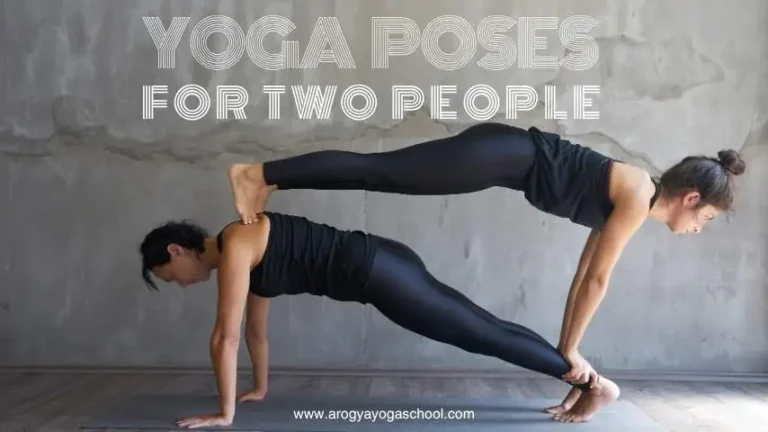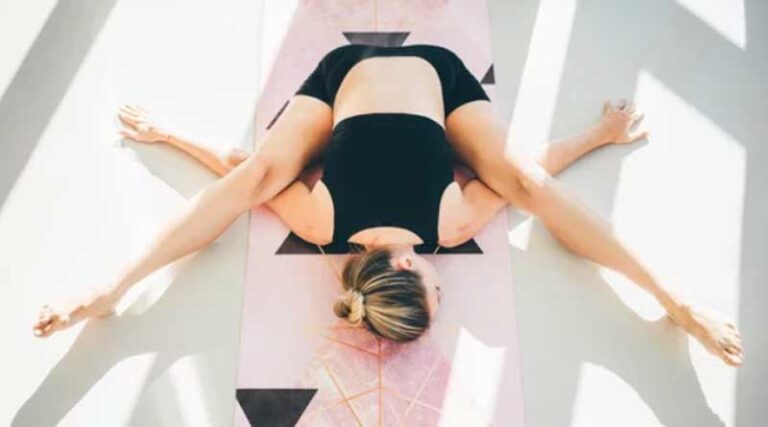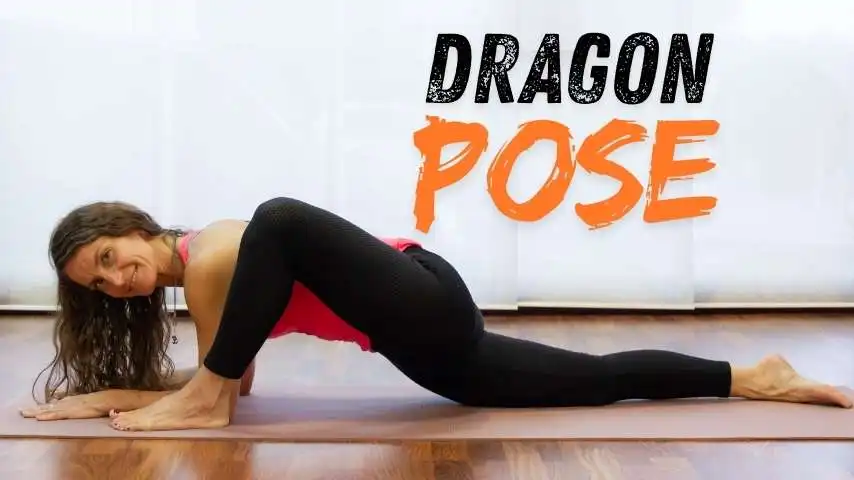
Dragon Pose is a powerful pose with deep physical and energy benefits. Many poses in yoga can help you achieve flexibility, balance, strength, and emotional release. Practitioners commonly use Dragon Pose in Yin Yoga as a hip opener, and it targets the hip flexors and thighs. It promotes stillness, increases flexibility and helps to release emotional tension.
With the right modifications and mindfulness, beginners and advanced yogis can adapt Dragon Pose.
What is Dragon Pose?
Dragon Pose is a Yoga posture that’s similar to the low-lunge position in other yoga styles. There are key differences. In Yin Yoga, practitioners stay in each pose for a while, sometimes as long as five minutes. This allows them to reach deeper areas of their body, such as ligaments, fascia, and joints.
The Dragon Pose helps release tightness in the hips and pelvis, which often hold emotional stress. This pose builds your strength and keeps you calm. You’ll experience stronger sensations as you hold the pose longer.
The Dragon Pose is an ancient Chinese medicine technique. It stimulates Liver meridians, and helps balance Qi (energy).
Dragon Pose Yoga Benefits
Regularly practicing the Dragon Pose can have a variety of benefits.
1. Deep Hip Opening
Dragon Pose stretches deeply the hip flexors. This includes the quadriceps and psoas, which prolonged sitting or intensive workouts often tighten. This improves lower-body flexibility, and hip mobility.
2. Release Emotional Tension
According to both somatic and yogic philosophies the hips can store emotional trauma and stress. Dragon Pose helps to release emotional blockages, and supports emotional healing.
3. Better Posture
Dragon Pose helps correct anterior tilt by lengthening and strengthening tight hip flexors. It also improves posture for those who spend long hours sitting.
4. Improved Blood Flow
This posture can increase blood flow in your lower body, pelvic area and help to recover your muscles and joints.
5. Enhances Mental Calmness
Dragon Pose teaches you to relax your mind and notice strong feelings without getting overwhelmed. Dragon Pose helps you relax your mind, and to notice strong emotions without becoming overwhelmed. It promotes mindfulness and patience.
6. Supports Digestion and Reproductive Health
Dragon Pose is good for your stomach and pelvic area. It can help with digestion and support reproductive health.
How To Do Dragon Pose (Step by Step Instructions)
Dragon position yoga comes in many variations. Start in the tabletop position. Step your right leg forward between your palms, aligning your knee with your ankle.
Slide your left foot backwards, lowering your knee. Hands can be resting on the blocks or floor.
Step-by-Step Guide: Basic Dragon Pose
1. Start in Tabletop position
- Start on your hands, knees and tabletop.
- If you need more padding, place a blanket beneath your knees.
2. Step One Foot Forward
- Bring your right foot forward between your hands.
- Align your right leg directly over your right foot.
3. Lower your back knee
- Extend your left leg and slide the right knee backward.
- Place the toes or the top of your left foot under the mat.
4. Hands on the Floor or Props
- Place your hands on either side of the right leg.
- Place yoga blocks under your hands if you are unable to reach the ground comfortably.
5. Settle into Pose
- Your hips should be lowered gently.
- You can either keep your chest up or lower yourself onto your forearms to stretch deeper (optional).
- Make sure that the front leg does not extend beyond the ankle.
6. Hold the Pose
- Breathe slowly and deeply for 2 to 5 minutes .
- Relax your muscles, and let gravity deepen the stretch.
- Notice how you feel in your body and mind, but don’t react to those feelings.
7. Release and switch sides
- Bring your hips slowly back to the table.
- Repeat the pose to the right side.
Dragon Pose Modifications and Variations
You can choose from several different variations to experiment with different intensities.
1. Winged Dragon (Outer Hip Focus).
- Place your right foot toward the edge and open the knee.
- This is a targeted treatment for the outer hips and groin.
2. Twisted Dragon
- Place your left hand on the floor.
- Raise your right arm and twist your torso right.
- This exercise adds a spine twist, and engages obliques.
3. Flying Dragon (Balance & Strength)
- Lift your back leg off the mat and perform a High Lunge.
- This version has more active, and it strengthens your legs and core.
4. Fire Breathing Dragon
- This dynamic variation involves gently pulsing the hips back and forth while deeply breathing.
- Ideal for warming up or exploring mobility.
Tips on Practicing the Dragon Pose
- Warm up first: Perform gentle hip openers and sun salutations prior to deep yin postures.
- Use Props : Yoga blocks or bolsters are great for making the pose easier to do.
- Support your Back Knee Place a blanket under your back leg to prevent discomfort.
- Avoid Pain : You can tolerate some discomfort, but sharp pain or stabbing pain should not be. Listen to your body.
- Stay still. Let yourself relax and let gravity do its job.
- Breathe deeply: Your anchor in Yin Yoga is breath. Slow, steady breathing calms the nervous system.
Contraindications & Precautions
Dragon Pose may be beneficial for some, but not everyone.
- Hip and Knee Injuries: People with serious hip or knee problems should avoid this pose or change it with help.
- Pregnancy : Deep hip openers are best practiced under supervision and with caution in the later stages of pregnancy.
- Lower back pain: Protect your spine by gently engaging your core.
- Beginners Start by holding the position for 1-2 minutes and increase your hold time as you adapt to it.
Conclusion
The Dragon Pose is more than just a stretch. By holding the pose and stretching deeply, it helps you find emotional clarity and release energy. This pose can improve your yoga practice. It boosts hip flexibility, reduces emotional stress, and enhances mindfulness.
This pose is like a dragon. It takes respect and bravery. If you approach it with patience and an open mind, you will discover strength, gentleness, and change.
Recommended Practice
To incorporate Dragon Pose into your yoga routine:
- Try to practice at least 2-3 times a week.
- Hold each side for 3 to 5 minutes.
- To release tension, follow with contraposes such as Child’s Pose and Downward Dog.
